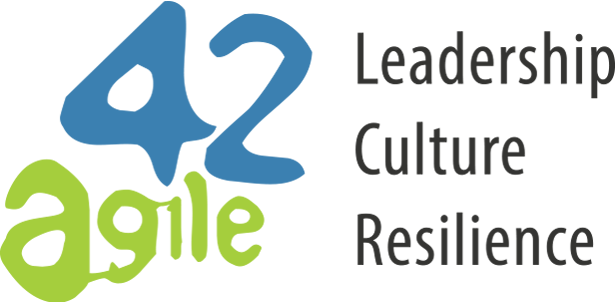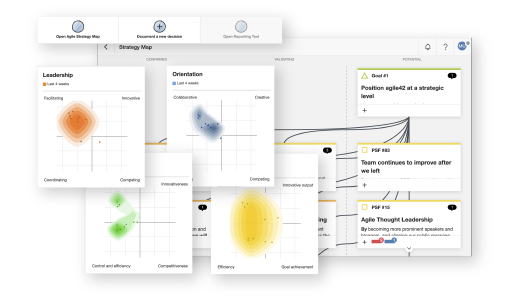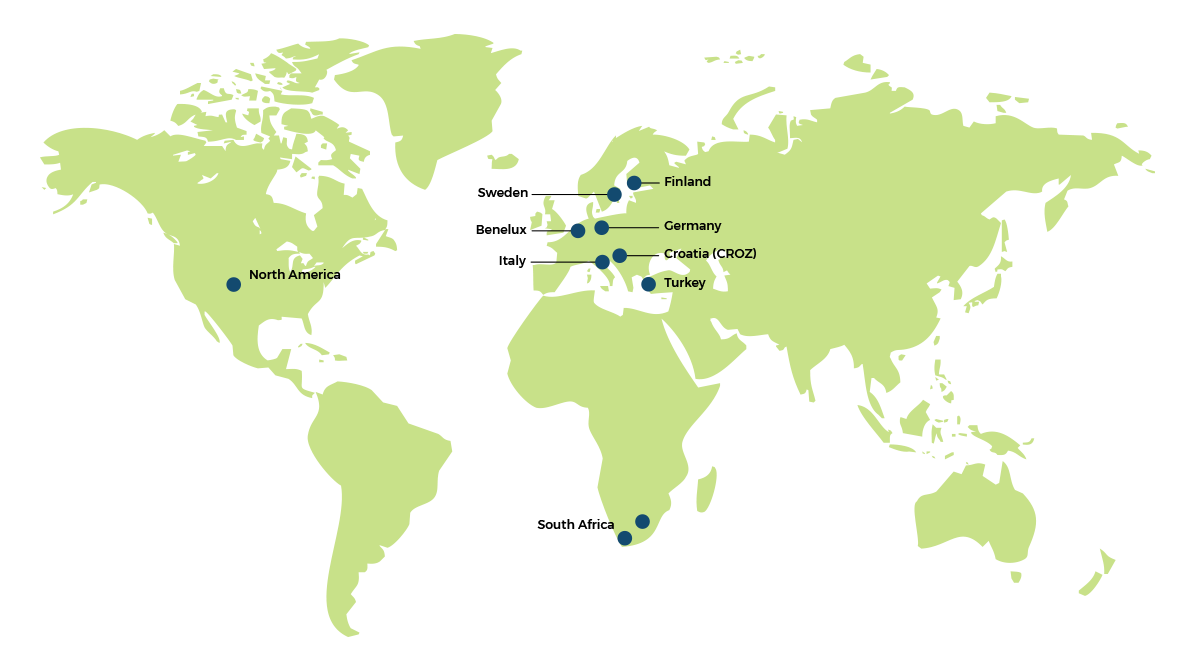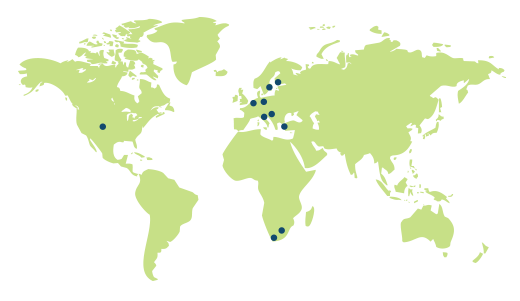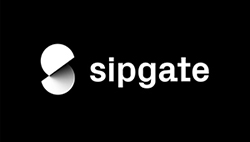 Fast growth brought challenges as well as rewards to the telecommunications company from Düsseldorf, which in 2009 was struggling to structure its new, larger self and to create innovative products. With the help of agile42, within a year Sipgate not just overcame the crisis, but became a model of agility, literally writing a book on the subject.
Fast growth brought challenges as well as rewards to the telecommunications company from Düsseldorf, which in 2009 was struggling to structure its new, larger self and to create innovative products. With the help of agile42, within a year Sipgate not just overcame the crisis, but became a model of agility, literally writing a book on the subject.
Article in Creditreform Magazine: Agility and organizational transformation
Creditreform, the business magazine of the Handelsblatt publishing group, just published an article by Tanja Könemann on agility as a way to meet the demands of customers and the fast-paced modern marketplace, including the story of sipgate’s agile recovery with the help of agile42.
The article is available online in German, but we thought it also deserved an English translation, which follows here:
If It Doesn’t Fit, Use a Bigger Hammer (Was nicht passt, wird passend gemacht)
Agility is considered a cure-all for mastering the digital transition. Is it all hype? By no means, but it is also not a standard recipe. Each organization needs their own agile way.
For Sipgate, Agile ways of working were their salvation. After five successful years, the internet and phone service provider, founded in 2004, started going downhill. “We got slower and slower at developing and selling new products” remembers Tim Mois, the founder and CEO of Sipgate. In a leadership conference it became clear: the company that used to live to bring ever new VoIP solutions to the market had no more new original products in the pipeline. “As we asked ourselves where do we see ourselves in three years, the answer became immediately clear: if we went on this way, there would be no “us” any more”. An employee suggested introducing Scrum (see below), and so initiated the agile transformation of the entire company.
A mere year later Sipgate has long overcome the crisis and works in an agile way through and through. And there’s more: the corporation from Düsseldorf is considered a trailblazer for agility. With regular meetings, a book they wrote themselves, and offers from other companies to send whole departments over to them for day-long workshops, CEO Mois beats the drum for agility. The way Sipgate works, which means that the employees hire their colleagues themselves and take care of their own timekeeping and punctuality, is famous all over the Rhineland.
Fast reactions to changes
This example shows that agility can be worth it. The consultancy BCG has found that agile companies have up to five times higher profit margins and stronger growth that their competitors in the same fields. According to this study, agility helps with faster reactions to changes in customer demands or market opportunities. In addition, it is a timesaver and simplifies decision-making. And that’s not all. The authors of the 2018 HR Report from the Hays Personnel consultancy and the Institute for Employment and Employability (Institut für Beschäftigung und Employability (IBE) in German) write: “the agile organization is the organizational form that is most likely to be able to deal with the digital transition.” Organizations that work in agile ways are also able to better retain and motivate their employees. This sounds very good, but what does agility mean for companies in the first place? “Agile organizations are distinguished by high and fast adaptability to changing frameworks and market conditions”, says Jutta Rump, Professor of General Business Economics with an emphasis on International Personnel Management at Ludwigshafen University. They appear flexible with regard to adjusting products, processes, and above all the competences of their employees. “Agile Organizations are networked internally to a higher degree and the employees organize themselves. Working and project teams are in the position to take autonomous decisions to some extent.”
A good roadmap for midsize companies
Should now every midsize company become an agile organization? “For business that have cultivated hierarchy and a linear organization for decades, a complete change does not always make sense” says Jutta Rump. “Midsize companies need to think about whether specific agile methods are a good fit for them.” These could be, for example, an Innovation Lab working directly with the Leadership or individual projects implemented in an agile way. Rump is certain: “This will be good for any company.” There is no company that is too small: “Design Thinking can suit even a bakery – for example when new baked goods need to be developed.”
The mid-sized sector has many things going for it when it comes to implementation. Not just because it often already has weak hierarchies, short decision-making pathways, and independent employees: “The base of agile working is value-oriented business,” says Rump. Value is exactly what has held small and midsize companies together for generations. “On the way to more agility in companies, the mid-level ones can also reflect on what they have been doing successfully for decades.”
Easy solutions sought
Back to Sipgate. Whoever wants to know what agility in a company can set in motion, should study the crisis that started it all. How did the company from Düsseldorf stop moving forward? “From 2004 to 2009 we grew fast – from 13 to 70 employees,” explains the CEO, Mois. “Between 20 and 30 employees the communication breaks up. Before, everyone knew what the others were doing.” In order to do justice to their new size, Mois introduced new management levels and bought a project management software. That, however, did not help. “Ever worse: departments that worked against one another developed. Our calculation “more employees, higher productivity” was not working out.”
Rigid hierarchies, endless processes of coordination, and leadership following the waterfall principle: according to this, plans are worked out from the start of the project down to the smallest detail and, therefore, often the conclusive expertise, that of the employees, gets left out. Thomas van der Burg is also familiar with impediments like these. The division leader of the pharmaceutical Sanofi pushed for the agile transformation of his test laboratory in 2013. “Before our agile journey we were structured very hierarchically, if only to fulfil the strict regulatory requirements for the development of medicinal products” he said. The structures were complex, the communication needs were immense, and the sales demands were large. Like Sipgate, the organization was too rigid to quickly develop new products. “We used to work on a dozen projects at the same time and none would be ready by the desired deadline.”
Nonsensical masterplan
Van der Burg tried to turn the ship around and worked for weeks on the largest project plans he had created so far – a masterplan that was supposed to coordinate all projects and finally bring planning security. Just as he had sent the three-meter-long stack of work to the printer, the first project leader called in wanting a change. And then another. And another. “By the end of a single workday my plan was no longer up-to-date, and by the second day it was complete nonsense”, van der Burg remembers.
The chief developer noted that a fundamental change was needed rather than another project plan. He started asking himself: “What would we do, if we were to found the division anew?” The answer for him was also Scrum. After a year he could show the first successes: better customer feedback than before and keeping to the deadlines were just as important as the higher quality of the new products. Thomas van der Burgs’ agile journey did not end there. “Agility doesn’t mean just introducing Scrum. It means changing an organization with lots of patience, continuously and collectively.”
Scrum – and then?
In order to reach that goal, Florian Herschke, CFO of the Jochen Schweizer Mydays Group, brought in the Objectives and Key Results (OKR) Leadership Model. This model, also used by big names in Silicon Valley such as Google, helps to develop shared business goals and to break them up into individual, achievable steps. “In software development we have been using Scrum and Kanban since 2010. OKR is for us the connection that enabled us to succeed in rolling out agile ways of working in other company sectors.”
Many companies that have engaged with agile methods early on are at the stage described by Herschke. “Generally we have agile havens in companies”, says Marion Eickmann, CEO of the consulting company agile42. “They now need to bring them all together.” And whoever has not started working with agile methods yet has the unique opportunity to start where it makes most sense: from management. “Management must first understand what agility means. The leadership must establish a base that they will then expand and use as a model.”
Resistance from the executive level
Even at the leadership level, however, change often gets the chop. Rump, a researcher in how organizations develop, talks about a gap between words and actions. Indeed, around 51% of responders to the 2018 HR Report state that an agile structure is important or very important to their company. However, truly working with agile methods is rather rare: currently 17% of responders say that such methods are used in IT; in all other sectors, this is even more rarely the case.
Why is this just talked about and not done? Fear of losing power, says Rump. Agility in companies means democratization. “For the protagonists who are powerful today, with all their privileges and all their standing, this is sometimes hard to stomach.”
Leaders must loosen the reins, then, in order to let companies become agile, an ongoing learning process. “Learning not just to take responsibility, but also to let go”, says Thomas van der Burg. “Trusting and letting others act – that is essential”, acknowledges Florian Herschke as well. “I had to learn that my colleagues are closer to the customer. They are the experts.”
In this approach, the duties of leaders change: they move further away from the day-to-day business and towards strategic issues, towards pioneering the agile transformation process and being communicators. “When companies ought to work in an agile way, it is the duty of the leadership to make clear to their colleagues what this will mean for them”, says Tim Mois, the CEO of Sipgate. “First I am taking something away from them: namely the certainty of working according to specifications.” This is why it is important to make clear again and again what they will gain in return: “more freedom and accountability and, ultimately, also more fun at work.”
Agile organizational culture
An important prerequisite for that is organizational culture, especially when it comes to the issue of how to deal with mistakes. “Some employees cannot come to terms with the openness and transparency of working in an agile way”, says Thorsten Reitz, who champions agility as the leader of Digital Sales Platforms at TUI.com. “They are afraid that mistakes or reduced output will be discovered. Because of this, it is very important to overcome this fear”. Neither the founder of Sipgate, Mois, nor the other managers struggled with such profound changes alone. They all brought consulting in-house for some time, while at TUI.com there are now two permanently employed agile coaches.
Yet for them it is certain: it was worth it. “Companies that miss out on shifting to agile methods are going to be left behind”, says Florian Herschke. “Customer needs and market conditions change so fast, that they cannot be tackled with classical methods.” Rump, the scientist, has a similar point of view: “Despite the loss of certainty and power, agile ways of working are going to become more and more the norm in companies. Otherwise they cannot withstand the pressure of competition. I am an optimist: I think that agility is going to prevail in the next ten years.”
Four questions to…
…Marion Eickmann, founder and CEO of agile42, an international agency that supports companies through their agile transformation. They count among their clients companies such as Sipgate, Sanofi, and Mitsubishi Electric Europe.
What is the goal of an agile transformation?
Agility should lead to companies reacting fast and thoroughly to changes, so that they adapt and re-orient themselves constantly. The goals are resilience and antifragility – so eventually a state that is more stable and at the same time more flexible. For companies, part of this is also not reacting like a large whole any more, but thinking in smaller, more flexible units.
And what is the starting point?
An agile organization needs robust processes and short decision-making pathways. We, therefore, first run a process analysis, through which we study the internal operational structures. That helps us identify so-called cost drivers – activities that last long but bring the company barely or no closer to achieving its goals. On the basis of this, we start shifting specific teams to the new, agile ways of working.
How do you proceed from there?
We recommend small steps, but we also advise that agile pilot projects should represent a cross-section of the organization, so that the necessary changes become apparent. That leaves the employees room to experiment. They can discover agility for themselves in a quasi-protected space and impediments in processes can be identified step by step.
How can we support the leadership?
An agile transformation process requires major changes in the company culture. Management must turn into leadership and employees sustainably enabled to do things by themselves, independently. In addition to that, the leadership team must shape the organization accordingly and model the desired behaviours themselves.
